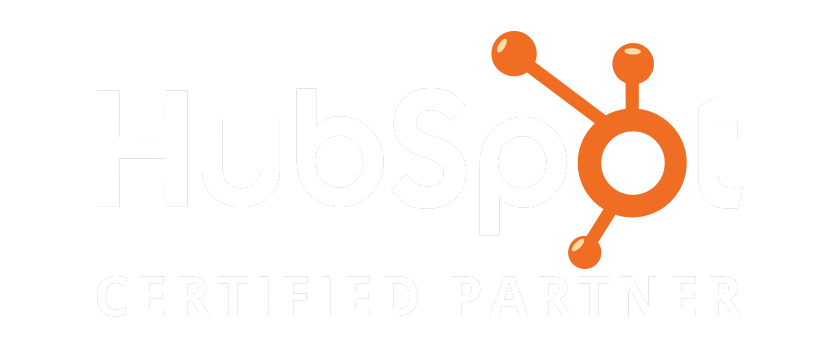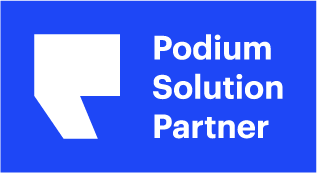The field of digital marketing offers many options for drawing new customers, but few hold the power of email marketing. That’s because email provides you with the ability to reach each customer one-on-one, sharing useful information with them, and deepen the customer-business relationship – driving sales and accomplishing key steps in the customer value journey.
With email, you can target your message specifically, reaching a small subset of customers with edutainment messages that move the customer from one stage of the customer journey to another. The power of this digital marketing method is its ability to have one-on-one contact that deepens existing connections.
So, how do you get started with e-marketing?
1. Build Your Email List
First, you need a list. You can build your own by requesting your customers’ email addresses. You need to include a notice that states your contact preferences, such as a statement promising not to share their contact information with any third parties. You should also get their permission before sending them any form of digital contact, including email.
The other option is to buy an email list from a respected company. A good email list provider will have obtained written consent from the owners of the email addresses to share or sell their email address information for the purposes of receiving email contact from advertisers. Again, permission is required no matter what the contact method or who does it.
Some individuals will not consent to allow you to share their information, but they will allow you to contact them directly. You need to keep these individual’s emails or contact information separate from the other list that does allow third-party contact. This prevents the accidental sharing of information from people who did not provide third-party consent, an activity that can land you in court for privacy violations.
2. Contract with a Reputable Email Service Provider
The keyword in this step will always be reputable. You should avoid amateurs and fly-by-night companies. Major email service providers like SendGrid and Klaviyo provide many features that help you get started the right way. Those include email templates organized by the goals, tracking capabilities, automated contact, and mobile device optimization. Other software or cloud options for an email campaign include Constant Contact and MailChimp. These firms all meet the criteria required to comply with U.S. national email regulations in the CAN-SPAM Act and the UK/EU GDPR.
3. Be Honest and Forthright
When you collect email addresses, whether online or in-store, it’s best to remain honest and straightforward about your activities and how you plan to use the email address. This transparency includes your goals for the contact, the planned frequency of your communication, and the content type of email you plan to send. You should provide a written and online notice of this for each person to read and understand. Online signups should provide this information and require the individual to agree to it using a checkbox next to the statement. By honestly letting them know why you will contact them, how often and only with relevant, useful messages, you pre-train them to engage with your messages and even look forward to them.
Regardless of the contact method, you should only contact people no more than once per week. Some businesses only send a monthly newsletter. One way to assess your overall customers’ contact frequency preferences is by conducting a survey. Remember that you cannot send any contact to any person without prior written consent, and you must adhere to the agreed-upon contract schedule. This contact includes other businesses. For example, you cannot send your competitors or your business partners marketing emails or other marketing contacts without their prior written consent.
4. Segment Your List
Segmenting is the process of dividing your lists that you began in Step One. This is a cornerstone of online marketing that helps you better reach people who want what you offer. You already segmented between individuals who are willing to let you share their contact information with third parties and those who are not. Next, segment by interest. Your business probably has multiple products or services. When you segment the list into those individuals interested in a specific product or service, then you increase conversion. You can send them a segmented email with that particular product or service. And send them to a landing page customized for that product or service.
Think about creating your segments carefully. Make a list of items you typically upsell and what you try to bundle with them. You simply move this concept to email. It works the same way with services. If you offer consulting sessions to solopreneurs and mid-sized businesses, your offers will differ because the target audience differs. You would upsell different products to a solopreneur than a startup with employees, and you would upsell different products to a startup than to mid-sized businesses. Your segments should reflect this.
5. Set Your Email Marketing Strategy
You started your business with a strategy. You start your email marketing plan the same way. First, you need to determine the outcome you want. This is your goal.
You then determine specific steps you can take to achieve the goal. These are your milestones. This begins the formation of your email marketing strategy.
You develop your sales funnel and the various stages of development to reach the end of the sales funnel – the conversion known as the sale. Your funnel will differ from another business. Building a mailing list comprises one part of the funnel. Another funnel step could be a website visit. Registering on the website is another funnel step. Your funnel should reflect your sales goals drawn from your business plan.
6. Develop Emails and Offers
Your email campaign needs to provide relevant edutainment (educational & entertaining) information, as well as functioning as a lead magnet. They should be easily digested messages that are short, sweet, and to the point that promote the service or product. A few ideas include checklists, instructional videos, eBooks, articles, and product samples.
Besides ‘selling’ emails, you’ll probably be sending other emails that work in tandem with one another.
- Transactional – provide the customer with better service such as invoicing, login credentials, billing notifications, and e-receipts.
- Relational – engage with customers and build a customer-business relationship.
- Promotional – moves people through the sales funnel.
Marketing Automation
While email marketing is a key marketing tactic, marketing automation is an overarching strategy. Marketing automation connects multiple touchpoints in the customer journey with marketing channels, including social media, email marketing, and content marketing. One of our core goals with marketing automation is to nurture prospects for the long-term, which means focusing on goals beyond direct sales.
Marketing automation improves communication. When we automate marketing, we can focus more heavily on the quality of our campaigns and messaging. Marketing automation gives your team the ability to add more personal touches to your campaigns. By collecting data on a prospect’s interests and goals, you can custom-tailor future offers to be more compelling.
Marketing automation will empower your organization to do the following:
- Add dynamic content based on an individual’s specific user profile. For instance, we can send targeted offers based on website traffic patterns.
- Categorize customers and prospects by common behaviors, interests, and demographic details. These become dimensions for customer segmentation.
- Develop optimal marketing patterns. Marketing automation can help the restaurant test different variables like email send times, subject headings, and ideas for personalization.
- Integrate marketing channels to deliver a comprehensive, cross-platform (social, mobile, search, email, etc.) user experience.
We can work to make sure that every touchpoint in the customer’s journey is carefully planned to optimize Key Performance Indicators.
To save time and maintain a cohesive brand image, we will work with you to get the most out of your platform – we will create templates, email signature, and message formats. This functionality allows you to establish a 1:1 connection to customers in less time – with templates matched to their interests.
We definitely think that software is a core part of the marketing automation dialogue, so we’re going to keep talking about it. But we also recognize how important it is to emphasize the strategic dimensions of this marketing practice.
Marketing automation enables inbound marketing- the practice of attracting users through quality content that nudges people toward the restaurant and its offering naturally. By closely aligning our content and marketing materials with your customers’ interest and location in their customer journey, your brand can attract, delight, and engage customers.
Contact Bake More Pies for Help with Email Marketing and Marketing Automation
Contact Bake More Pies today to get started with your email strategy and marketing messages. Our team can assist you in developing your email contact plans and create emails for you that convert sales, as well as design landing pages that help guide conversions to your website. Call us today!



